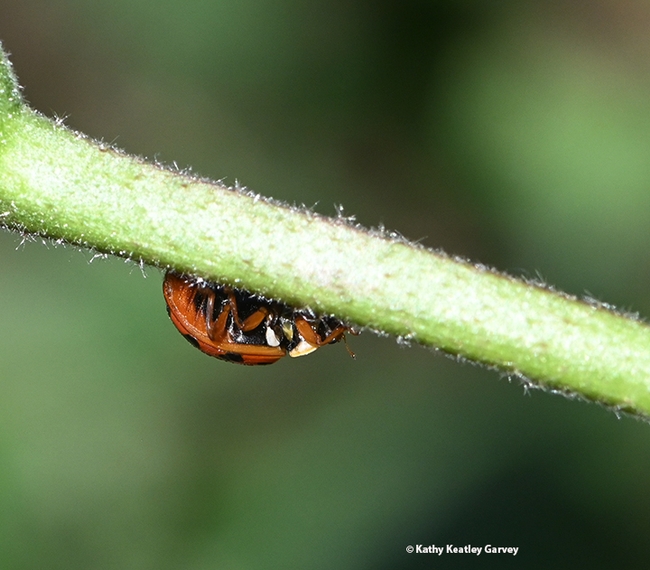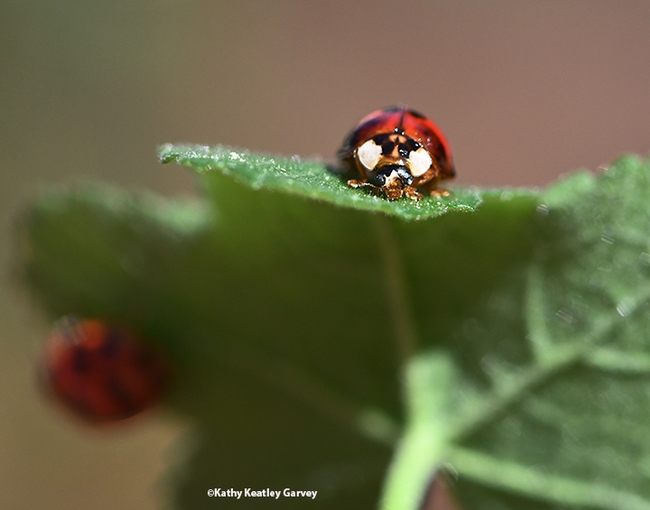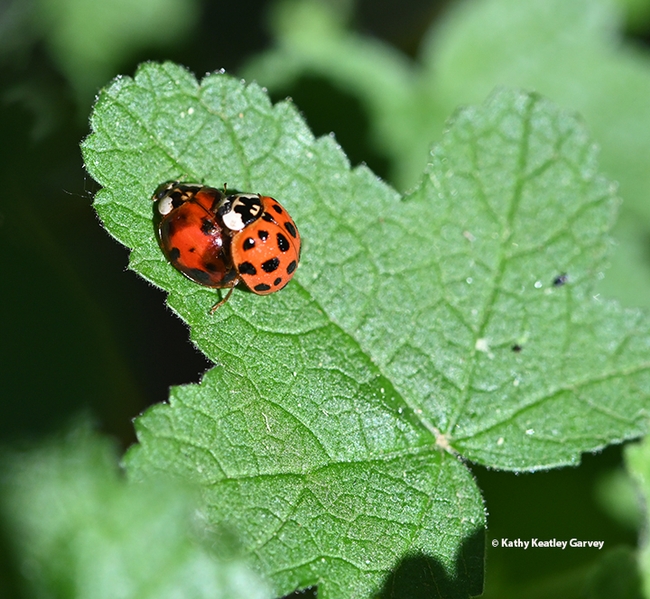June is bustin' out all over
All over the meadow and the hill
Buds 're bustin' outa bushes
And the rompin' river pushes
Ev'ry little wheel that wheels beside the mill
--Rodgers and Hammerstein
Just remove "June" and replace it with "Spring."
Rodgers and Hammerstein mentioned that "buds are bustin' outa bushes," but they could have changed that to "bugs."
Bugs bustin' out of bushes. Our little buddies, the bugs.
Sunday, March 20 was the first day of spring, and two lady beetles, aka ladybugs, made sure we knew it. They were bustin' some moves.
These multicolored Asian lady beetles managed to coordinate their arrival with their prey, those pesky aphids and other soft-bodied insects.
"Multicolored Asian lady beetle can be found in almost any type of vegetation that hosts its prey," according to the the UC Statewide Integrated Pest Management Program website. "It was introduced to control soft-bodied pests on fruit and nut trees. Since arriving in California in the 1990s, multicolored Asian lady beetle has become the most common lady beetle in many habitats. It has outcompeted and displaced certain native lady beetles that were more common prior to its arrival in the state."
And how many aphids can an adult beetle eat per day? More than 100. Larvae eat 'em, too. "Each larva can consume about 600 to 1,200 aphids during its development through 4 instars," UC IPM points out. "Because adults can live more than 1 year, an individual can consume over 5,000 aphids or similar-sized pests during its larval and adult lifespan."
"This voracious predator has improved biological control of soft-bodied pests in various crop, garden, and landscape situations. However, the multicolored Asian lady beetle is also an unwelcome pest when it enters buildings during fall seeking shelter overwinter. When disturbed adults can emit drops of their odorous, orange blood. Adults are attracted to ripening fruit and sometimes contaminate grape and wine juices with their bitter-tasting blood that contains alkaloids it uses as defensive chemicals."
However, our little buddies are always welcome in our pollinator garden. Aphids, not!
Okay, buds, go out and bust some more moves.
Attached Images:

A multicolored Asian lady beetle looking for love--or prey--on a mallow on the first day of spring. (Photo by Kathy Keatley Garvey)

Lady beetle, you are not alone. (Photo by Kathy Keatley Garvey)

Two multicolored Asian lady beetles who found one another. Well, call that a lady beetle and a gentleman beetle. (Photo by Kathy Keatley Garvey)